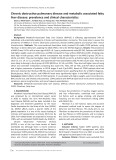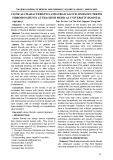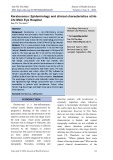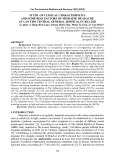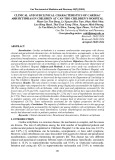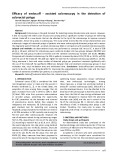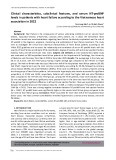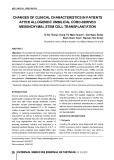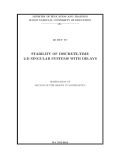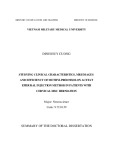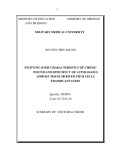
2
evaluating patients with different heart rates. In addition, MPI also
assesses the status of residual myocardial ischemia, cardiac wall motion,
heart function, cardiac muscle survival status. Therefore this method
helps clinicians predict and offer better treatments for patients.
3. Objectives of the study
- To investigate some clinical, laboratory characteristics and left
ventricular dyssynchrony using Gated-SPECT imaging in patients after
acute myocardial infartion.
- To assess the relationship between left ventricular dyssynchrony
on Gated-SPECT imaging and some clinical features, echocardiography
in patients after acute myocardial infarction.
4. Structure of the disse rtation
The dissertation consists of 128 pages (excluding references and
indexes) including 4 main chapters: Introduction: 02 pages, Chapter 1 –
Literature review: 36 pages, Chapter 2 - Subjects and methodology: 19
pages, Chapter 3 –Research results: 32 pages, Chapter 4 - Discussions:
32 pages, Conclusion and recommendations: 03 pages. The dissertation
has 29 tables, 13 schemes and figures, 20 illustration, 157 references
with 17 in Vietnamese and140 in English.
CHAPTER I: LITERATURE REVIEW
1.1. Lesions after myocardial infarction
Myocardial infarction (MI) is a condition when atherosclerosis
blocks the coronary arteries, stop supply of blood and oxygen to the
heart muscle. Although there have been many advances in diagnosis,
treatment and monitoring, myocardial infarction remains a challenging
issue for the health sector. The more patients rescued from acute
myocardial infarction, the more patients have to accompany the post-MI
disorders such as residual myocardial ischemia, left ventricular
remodelling, left ventricular dyssynchrony, arrhythmia, heart failure, re-
infarction.
1.2.Cardiac dysynchrony
In cardiology, dyssynchrony is the phenomenon in which the different
parts of the heart contract in a non-rhythmic physiological sequence,
leading to a decrease in ejection efficiency.Left ventricular mechanical
dyssynchrony is the differences in the timing of contraction or relaxation
between different myocardial segments or the contraction of the heart
muscle areas that are delayed in the systole.Mechanical
dyssynchronyusually appears in the late stages of some heart conditions,
associated with hypertrophy and left ventricular dysfunction. Left







